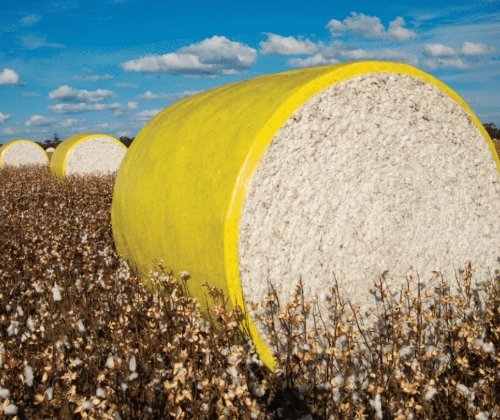John Deere has put its suite of automation features on the groundbreaking S7 Combine to the ultimate test in an exciting new challenge that has pitted one of Australia’s most experienced operators against a next-generation farmer in the most recent wheat harvest.
Two new S7s harvested alongside each other, one driven by an operator with more than 50 harvests under his belt, Joe Cornish, and the other by 25-year-old fifth-generation farmer, Angus Carrigan.
Angus had the benefit of all the new automation features, while our veteran, Joe, had them switched off, instead relying on his five decades of instinct and know-how.
The new docuseries Harvest S captures all the dust, drama and excitement as the S7 900s vie for most tonnes, least grain loss and the greatest productivity.
“Conditions were tough at our site at Gurley in northwest NSW, where we had a big wheat crop starting to lean over,” John Deere marketing director Ben Kelly says.
“But that’s what we wanted, to put the S7 through tough conditions in a real-world environment.
“And we could not have had two better competitors. We found one of the most experienced harvest contractors in Australia in Joe, who’s been farming since 1982, and asked him to drive the S7 manually for four hours without using any of the tech tools,” he says.
“And then we put Angus, one of the new generation, in the S7 with all that technology at his disposal to see if he could match Joe’s productivity, capacity, and efficiency.”
The S7 is packed with the latest onboard technologies to level up the performance of even the most novice operator.
Predictive ground speed automation lets forward cameras ‘see’ the crop 8.5m ahead of the machine in conjunction with pre-harvest satellite images to generate a predictive field map.

The combine then automatically adjusts speed to match the conditions and maintain optimum harvesting pace.
Harvest settings automation delivers an effortless way to lock in grain quality consistency.
An operator simply sets the desired grain loss, foreign material and broken grain limits, and the S7 Combine takes care of the rest, self-optimising on the go to hit those targets.
The benefits across the day, and the entire season, can increase productivity by up to 20 per cent* and help address skills gaps and operator fatigue during the critical harvest period.
For Joe, the new machine was a far cry from his early days contracting, when guidance technology was a piece of rope dangling from a pipe at the front of the tractor.
“I’m very sceptical about this sort of stuff, but you can always be proven wrong,” he says.
“The main thing is keeping it consistent. Stoppages cost a lot of money.”
Fifth-generation farmer Angus Carrigan has a passion for tractors and sees John Deere technology as making the job “a lot easier”.
“The use of cameras to see something coming means less time for me pulling straw out of blocked headers, and more time in the paddock is crucial,” he said.
“One of our challenges is finding skilled labour, and the new tech will help with that as well.”
As the grain flowed and the giant headers combed the paddocks, the two drivers were neck and neck.
Arriving back at HQ, it was clear the predictive ground speed automation had given Angus the edge in maintaining a consistent speed and high productivity and staying below the one per cent grain loss limit.
“I think the front made it a lot easier to follow the ground, it sped up itself and kept it a pretty consistent load the whole time, which was great,” Angus says.
Joe matched the grain loss, but his average speed had dropped to 10 km/h as he slowed to unload to the chaser bins and altered speed to match the variable crop conditions.
John Deere production systems specialist manager Max Cusack says the match proved technology can “bridge the gap” in experience.
“The S7 technology doesn’t unlock a hidden extra bit of mechanical performance, but what it does unlock is consistent mechanical performance,” Max says.
“So if you can get staff in the cab, we can bridge that gap in experience,” he says.
Afterwards, Joe stepped back into the S7 with the full suite of automation technology turned on and was quick to see the benefits.
“It’s definitely a lot easier to drive,” he adds. “I really liked machine sync unloading, the ease of filling the bin. I can see why it would be good for operators who aren’t as highly skilled.”

This was just one of the tests run at the beginning of the 2024 harvest season where John Deere had 10 harvest automation combines operating, and the results of those machines in a variety of conditions have been collated to summarise the performance of what predictive ground speed automation and harvest automation means for growers.
To watch Harvest S and see the results, go to the John Deere Australia and New Zealand YouTube channel.
Part 1: https://youtu.be/1kttySM4ALw?si=waY95xebdfnOZ_3S
Part 2: https://youtu.be/EZMZnSzYsk?si=BO_rKwlV2iX2bEJW
*Based on anonymised Ops Center data comparing John Deere combine models with and without predictive ground speed automation. Productivity is represented by tonnes of crop per hour. Results will vary depending on model, crop and field and operating conditions.




